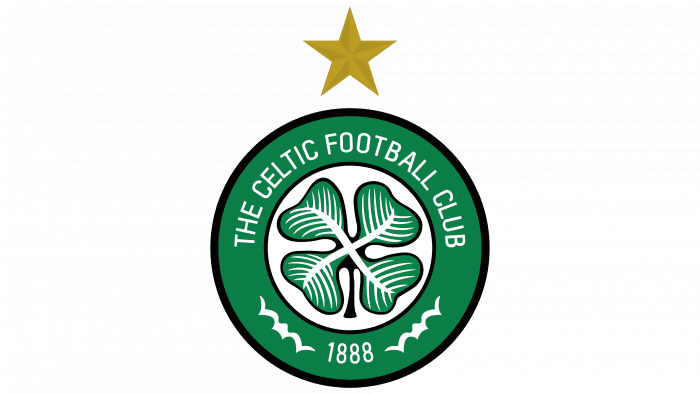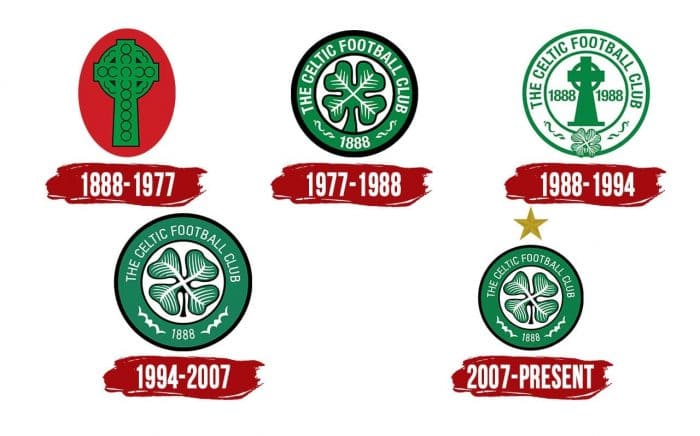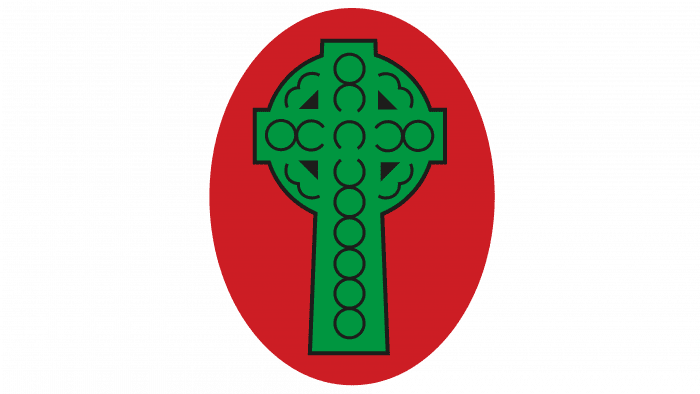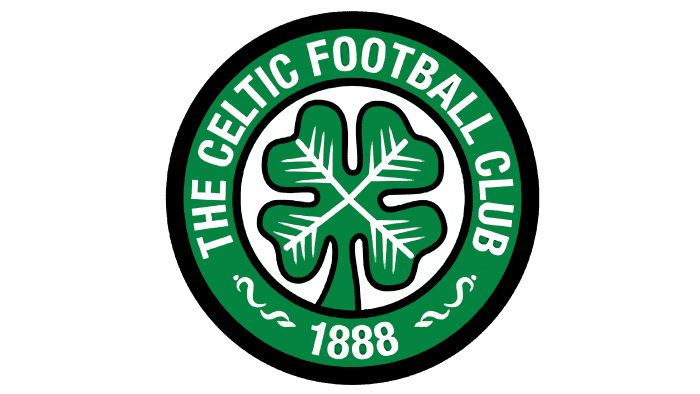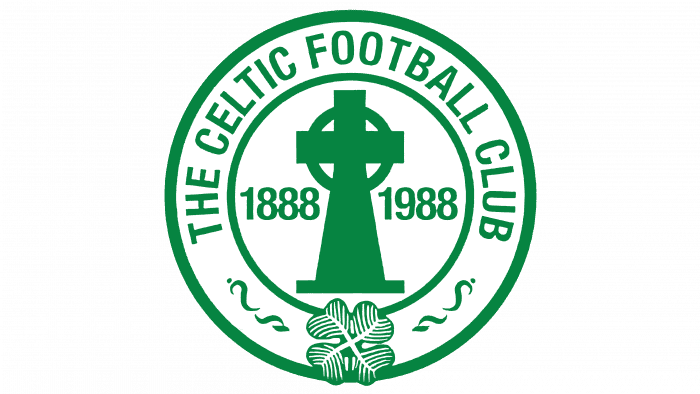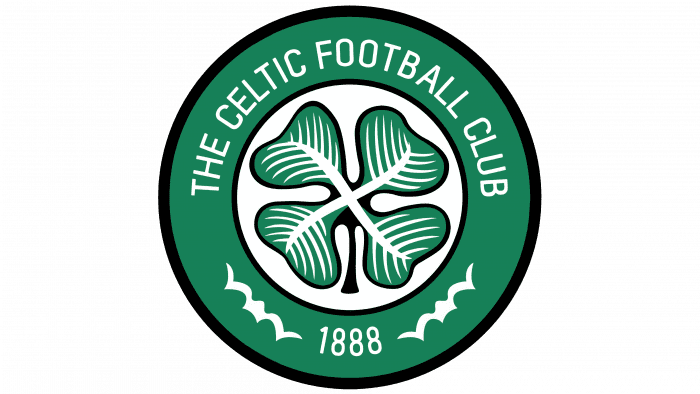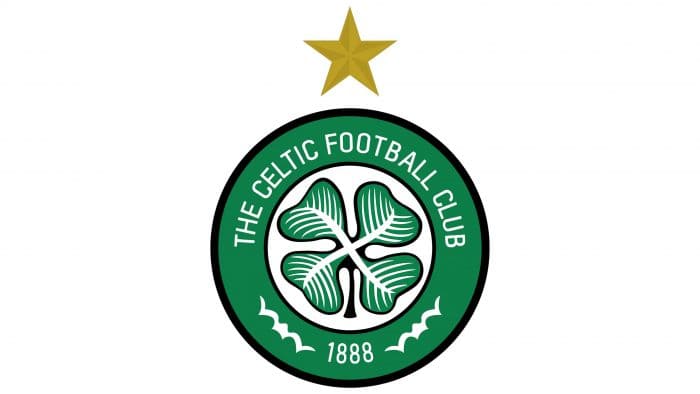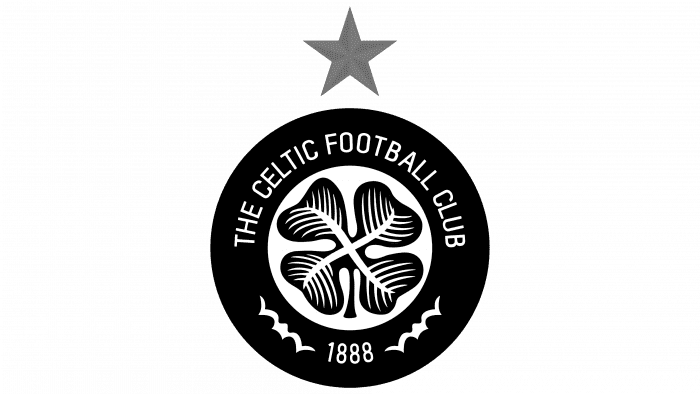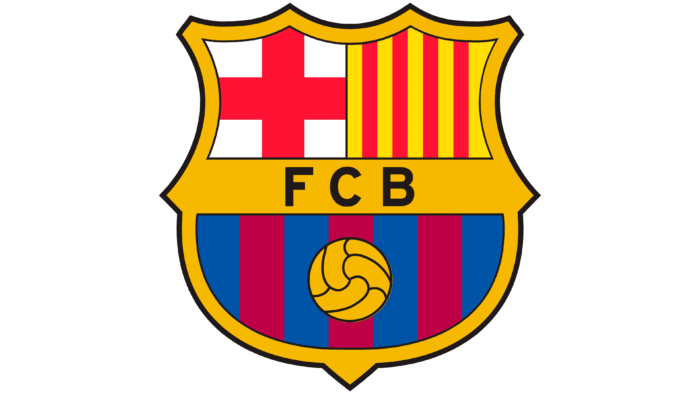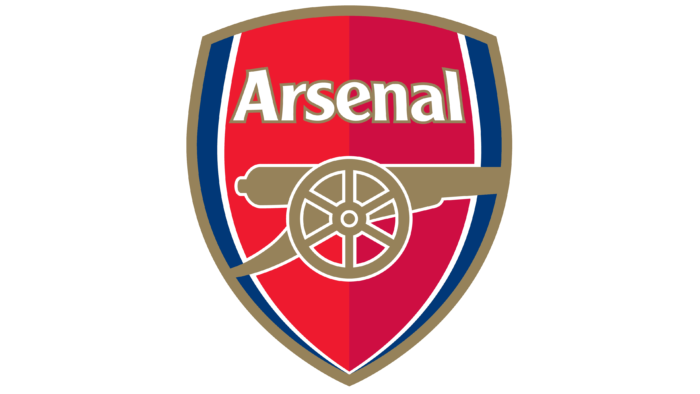The Celtic logo is reminiscent of the players who crossed the sea in centuries past. The club is like a lifeline that exists to support life. The emblem brings the viewer back to the team’s roots and first purpose.
Celtic: Brand overview
| Founded: | 6 November 1887 |
| Founder: | Celtic PLC |
| Headquarters: | Glasgow, Scotland |
| Website: | celticfc.com |
Meaning and History
The Celtic emblem has always featured classic Irish symbols and two colors from the Ireland flag: green and white. The team’s visual identity is primarily associated with the 4-leaf clover. But it appeared on the players’ uniforms only in 1977 – before that, the main sign was the Celtic cross, which briefly returned on the club’s 100th anniversary.
1888 – 1977
It so happened that the first logo became the cause of religious conflicts between the Protestant Rangers F.C. and Catholic Celtic F.C. After all, it depicted a Celtic cross, consisting of two intersecting stripes with a circle superimposed on them – an ancient symbol of the sun and Christianity. On the emblem of the football team, it was in the center of a red oval.
1977 – 1988
Round logo with 4-leaf clover and the words THE CELTIC FOOTBALL & ATHLETIC COY. LTD.” was developed back in the 1930s, but only started to be used on T-shirts in 1977. When that happened, the designers shortened the text to THE CELTIC FOOTBALL CLUB and changed the colors. As a result, the elements got black outlines, the clover and ring turned green, and all the inscriptions (including the year the team was founded) were repainted in white.
1988 – 1994
In honor of the 100th anniversary of the club, the Celtic cross has returned to the emblem. It took the four-leaf clover place, which was moved down to where Celtic was originally founded. The designers placed the number “1888” to the left of the cross and added the current year to the right: “1988”. In doing so, they made all the inscriptions and outlines green, using white for the background.
1994 – 2007
In the first half of 1994, Scottish entrepreneur Fergus McCann bought the sports club and modernized it. First, he changed the old name “The Celtic Football & Athletic Coy. Ltd. “to the one that was on the emblem: “The Celtic Football Club.” The businessman then brought back the old logo without the Celtic cross, updating the details a bit. It is now a circle divided into two zones: a white center with a four-leaf clover and a green ring with inscriptions.
2007 – today
In 2007, Celtic celebrated the 40th anniversary of winning the European Cup by adding a gold five-pointed star to its club crest.
Celtic: Interesting Facts
Celtic Football Club, from Glasgow, Scotland, is an important soccer club with a long history.
- Why They Started: Celtic was created in 1887 to help poor people in East End Glasgow. It was also a way to support Irish immigrants living there, showing how the club cared about its community from the beginning.
- Big Win in Lisbon: In 1967, they were the first British team to win the European Cup (now called the UEFA Champions League) by beating Inter Milan. This team called the “Lisbon Lions,” was special because all the players were from around Glasgow.
- Winning a Lot in Scotland: The Celtics have won the Scottish League many times and many other trophies. They’re one of the top teams in Scotland.
- Their Stadium, Paradise: Celtic Park, their stadium, is the biggest in Scotland and is famous for its amazing atmosphere during games. Fans call it “Paradise.”
- Big Rivalry: They have a huge rivalry with Rangers, another team from Glasgow. This rivalry is about more than just soccer; it’s tied to history and differences in religion and identity.
- An Amazing Season: In the 2016-2017 season, they didn’t lose a single game in Scotland, setting a record. They won the league, the Scottish Cup, and the League Cup that year.
- Fans All Over: Celtic fans are everywhere around the world. They’re passionate and known for creating a great home and away games atmosphere.
- Helping Others: The club continues to help people through the Celtic FC Foundation, supporting many good causes, such as fighting poverty and helping with education.
- Big Crowds: Celtic Park once had over 92,000 fans against Rangers in 1938, one of the biggest crowds for a soccer game in the UK.
- More Than Soccer: Celtic soccer is about more than just playing soccer. It’s connected to Irish culture and has inspired music, books, and art. Celtic stands for community and staying strong together.
Celtic is not just a soccer club; it’s a community with a proud history of helping others and bringing people together through sports.
Font and Colors
An important part of the East End (Glasgow) team’s visual identification is the Irish symbols: the four-leaf clover and the Celtic cross. The first represents luck, mercy, hope, and faith. The second personifies Christianity in Ireland and is associated with the local patron St. Patrick. These national signs replaced each other for hundreds of years until the four-leaf clover remained on the emblem.
Despite the thematic image, the club dispensed with Celtic inscriptions. Its name and year of the foundation are in simple cut-out type, which is not remarkable.
The colorful palette compensates for the lack of original letters and numbers. To make the image expressive, the designers used only two colors: green and white. They are both featured on Ireland’s flag, with green representing traditional Catholic society and white representing peace.
Celtic color codes
| Satin Sheen Gold | Hex color: | #af9322 |
|---|---|---|
| RGB: | 175 147 34 | |
| CMYK: | 0 16 81 31 | |
| Pantone: | PMS 111 C |
| Gold Foil | Hex color: | #bb9d25 |
|---|---|---|
| RGB: | 187 157 37 | |
| CMYK: | 0 16 80 27 | |
| Pantone: | PMS 7555 C |
| Black | Hex color: | #000000 |
|---|---|---|
| RGB: | 0 0 0 | |
| CMYK: | 0 0 0 100 | |
| Pantone: | PMS Process Black C |
| Sea Green | Hex color: | #0a8048 |
|---|---|---|
| RGB: | 10 128 72 | |
| CMYK: | 92 0 44 50 | |
| Pantone: | PMS 340 C |
